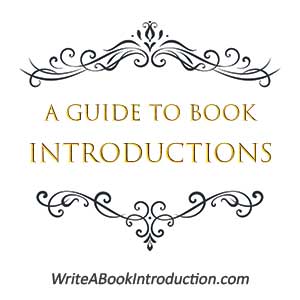A Guide to Writing Book Introductions
 This guide to writing book introductions answers the most common questions asked by both new and established authors. It also includes intriguing facts and statistics about book introductions. The following questions are answered in our FAQ:
This guide to writing book introductions answers the most common questions asked by both new and established authors. It also includes intriguing facts and statistics about book introductions. The following questions are answered in our FAQ:
- What is a book introduction?
- What’s the difference between a book preface and an introduction?
- What’s the difference between a book foreword and an introduction?
- What’s the difference between a prologue and an introduction?
- What’s the history and evolution of book introductions?
- How do you write an introduction to a book?
- How long should a book introduction be?
- What are good book introduction examples and samples with analysis?
Diverse writers of all backgrounds and genres have used this book introduction guide, not just to get readers engaged but also literary agents and book publishers.
This guide was created by a former literary agent who’s helped 400+ authors get literary agents and/or traditional publishers. Mark Malatesta has worked with authors for decades—as a literary agent, author coach and consultant, and Marketing & Licensing Manager for the book and gift publisher Blue Mountain Arts. Here you can see Mark Malatesta reviews.
Book Introduction Facts and Statistics
Book introductions are an essential element of many works, helping captivate readers and set the tone for the book. While often overlooked, introductions have a fascinating history and significant impact on reader engagement and sales. Here are some intriguing facts and statistics about book introductions:
Reader Attention Span
- Statistic: Studies show that the average reader decides whether to continue reading a book within the first 7–10 minutes. This makes the introduction a critical component for hooking readers.
- Fact: Many bestselling authors spend as much time refining their introduction as they do entire chapters, recognizing its importance in drawing readers in.
Percentage of Readers Who Read Introductions
- Statistic: Approximately 50–60% of readers claim to always read introductions in nonfiction books, while only about 20–30% do so for fiction.
- Fact: Nonfiction readers rely on the introduction to understand the book’s purpose and value, whereas fiction readers are often more eager to jump directly into the story.
Impact of a Hook
- Statistic: Books with introductions that include a compelling hook (e.g., a shocking fact, bold statement, or vivid anecdote) are 40% more likely to retain readers through the first chapter.
- Fact: Hooks like the opening anecdote in James Clear’s Atomic Habits or the bold question in Simon Sinek’s Start with Why are cited as key factors in their success.
Role in Marketing
- Statistic: Amazon’s “Look Inside” feature allows readers to preview book introductions, and 64% of buyers report using this feature to decide on a purchase.
- Fact: A well-crafted introduction can significantly boost sales by demonstrating the book’s value within the preview.
Extra Importance in Nonfiction
- Statistic: A survey of readers revealed that 70% of nonfiction readers decide whether to purchase a book based on the introduction or first chapter.
- Fact: Introductions in nonfiction books often serve as the author’s pitch, summarizing the book’s benefits and establishing credibility.
Introductions and Reviews
- Statistic: Books with strong introductions are 35% more likely to receive positive reviews on platforms like Amazon and Goodreads.
- Fact: Readers often mention the introduction in reviews, noting whether it successfully grabbed their attention and set the tone.
Reader Preferences by Genre
- Nonfiction: Readers expect introductions to clearly define the book’s purpose and relevance. For example:
- Self-Help: Introductions often include personal anecdotes and actionable promises.
- Academic: Introductions provide a detailed roadmap and justification for the research.
- Fiction: While rare, introductions are sometimes used to provide historical or cultural context for the story.
Digital Trends
- Statistic: In the digital era, 30% of readers sample introductions before purchasing eBooks, making this section even more critical for online sales.
- Fact: Digital books with concise, engaging introductions often have higher completion rates than those with long, dense openings.
Evolution of Introductions
- Fact: Ancient Greek and Roman texts often began with invocations to the gods or muses, while modern introductions focus on engaging the reader and providing clear context.
- Fact: The formal, dense introductions common in 19th-century books have given way to concise, reader-friendly openings in contemporary works.
Time Spent Writing Introductions
- Statistic: Authors often spend up to 10–15% of their total writing time crafting the introduction, ensuring it is engaging and polished.
- Fact: Bestselling author Malcolm Gladwell has stated that he writes multiple drafts of his introductions to perfect the tone and message.
Conclusion – A Guide to Book Introductions
Book introductions may be just a few pages long, but they play an outsized role in shaping the reader’s experience and a book’s success. From their historical evolution to their modern-day significance in marketing and engagement, introductions are a vital tool for connecting with readers. Whether it’s through a bold hook, a clear roadmap, or a compelling personal story, the best introductions leave a lasting impression and pave the way for a captivating read.
Now that you’ve read this introduction to writing book introductions, click here for the first article in our series about how to write a book introduction, “What Is a Book Introduction?”


 This guide about
This guide about 